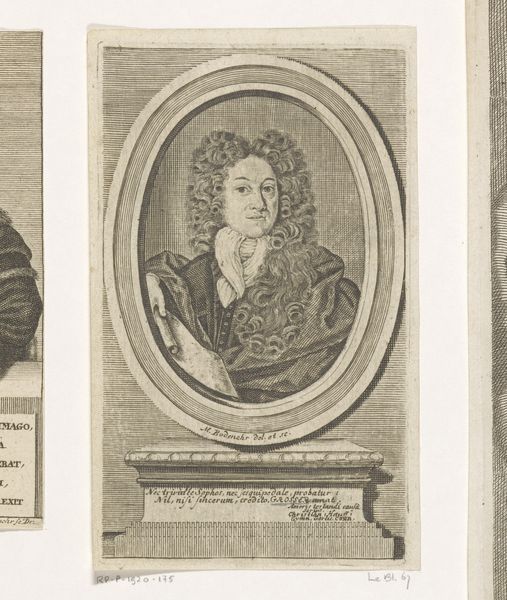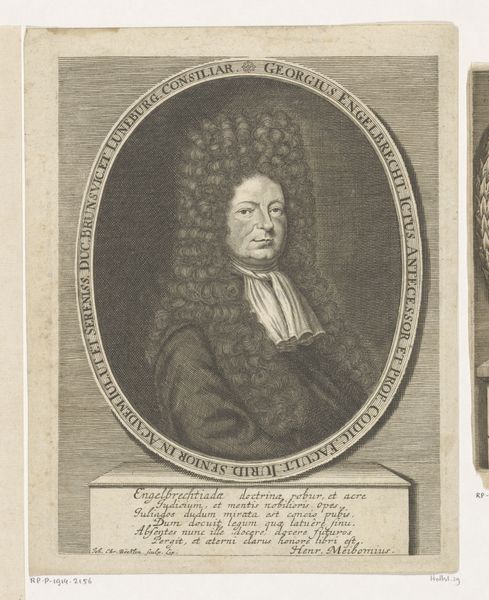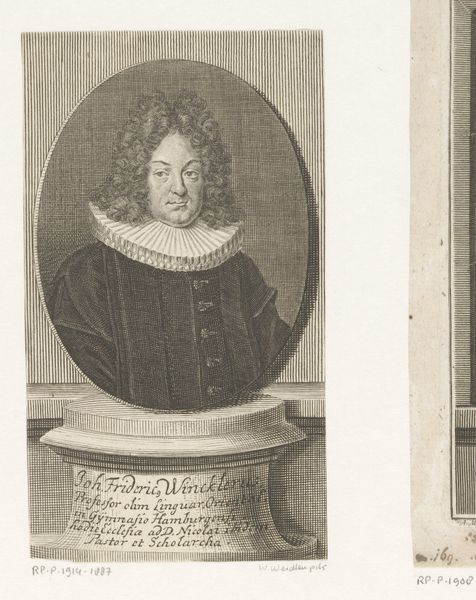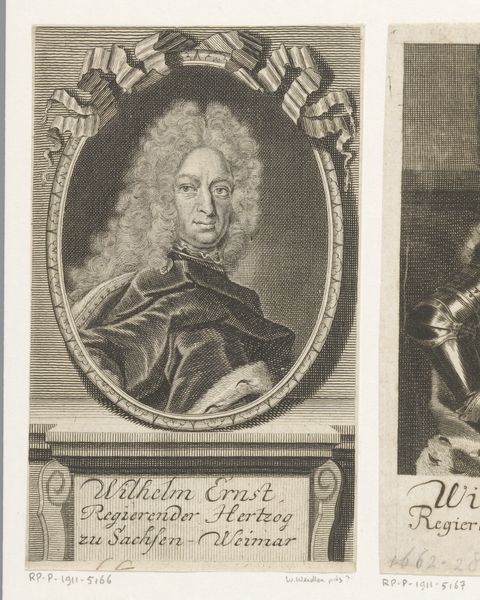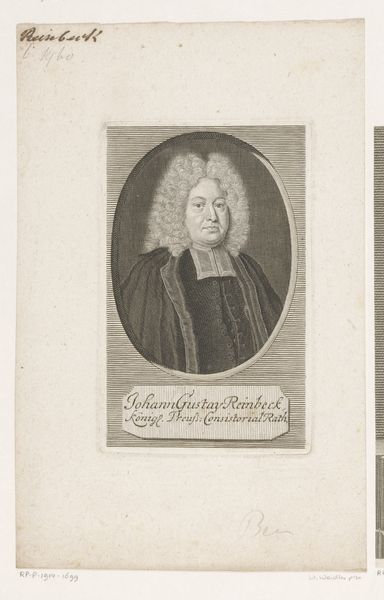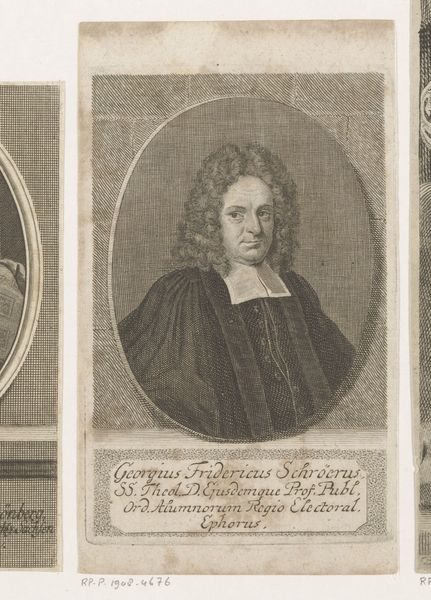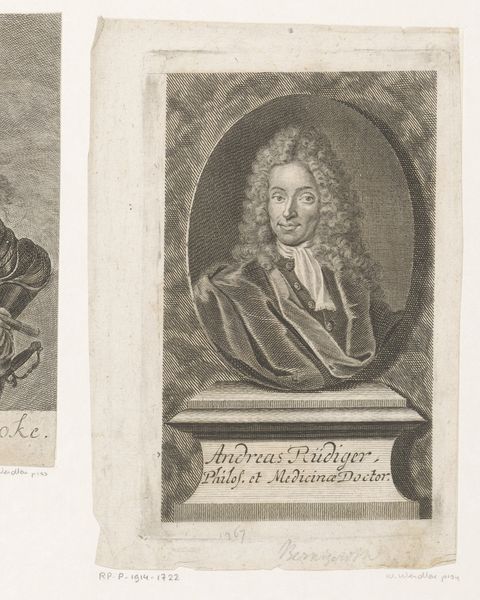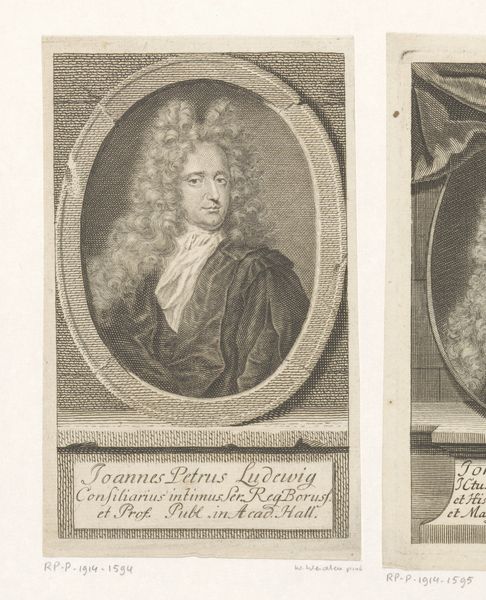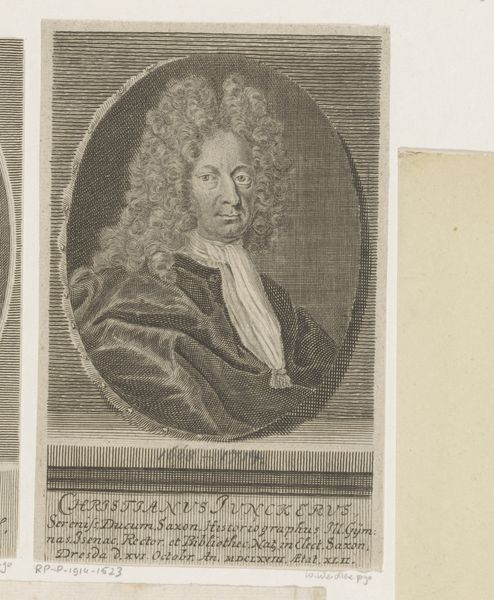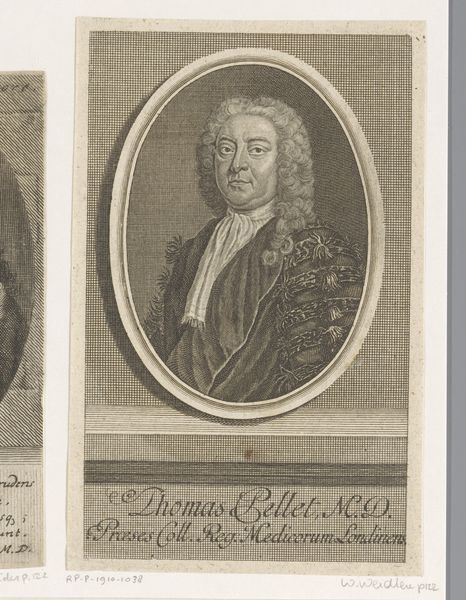
print, engraving
#
portrait
#
baroque
# print
#
old engraving style
#
form
#
19th century
#
line
#
engraving
Dimensions: height 159 mm, width 93 mm
Copyright: Rijks Museum: Open Domain
Curator: Let’s discuss this compelling engraving, "Portret van Wolff Georg Marche" created in 1735 by Johann Martin Bernigeroth, currently held in the Rijksmuseum. It’s a prime example of Baroque portraiture in print form. Editor: Immediately, I see a somber but determined figure. There's this intensity in his gaze, framed by an extravagant wig—almost comical, juxtaposed with the implied weight of his position. It feels very...calculated. Curator: Precisely! The visual language of the Baroque heavily relied on symbolism. Marche's wig, his armour partially visible beneath the draped fabric—these elements denote status and power, speaking volumes about societal roles at the time. Editor: That drapery! It seems almost alive. Does it symbolize anything specific or is it simply for grandeur? I’m also intrigued by the rigid lines, like architectural elements, setting off the organic form of his face and wig. The artist definitely understands contrast. Curator: The drapery adds a layer of nobility, absolutely, linking to classical depictions of power. Notice, though, how meticulously every detail, even within the lines of the engraving, serves to construct not just an image, but also the identity of Marche. He’s presented not as an individual, but as an archetype of authority. Editor: Archetypes can be so intriguing, particularly here, where you see this tension between individual and icon. It’s fascinating to think how much is projection, how much intentional... Perhaps Marche himself never quite inhabited this monumental role. Curator: It also speaks to the cultural memory inherent in such portraiture. It echoes visual traditions reaching back centuries while influencing expectations of leadership and representation for years to come. It's about continuity and the reinforcement of existing hierarchies. Editor: This really changes the way I see him! This isn't just a static representation. Instead it is about an intricate, even constructed dialogue between power, personality, and image over time, if you will. That sort of tension is the kind of thing that draws you in, isn't it? Curator: I completely agree. The layers of meaning woven into these older images continue to ripple through the ages. It encourages deeper introspection and awareness.
Comments
No comments
Be the first to comment and join the conversation on the ultimate creative platform.
